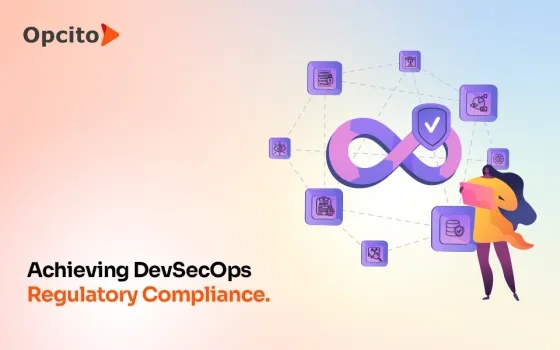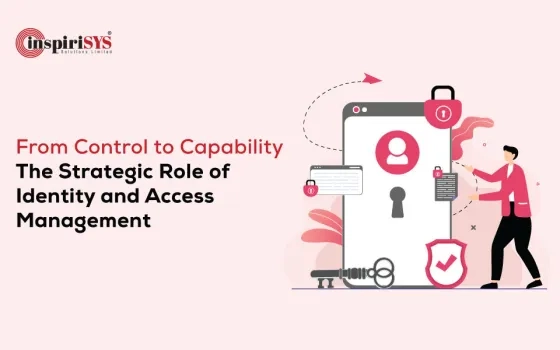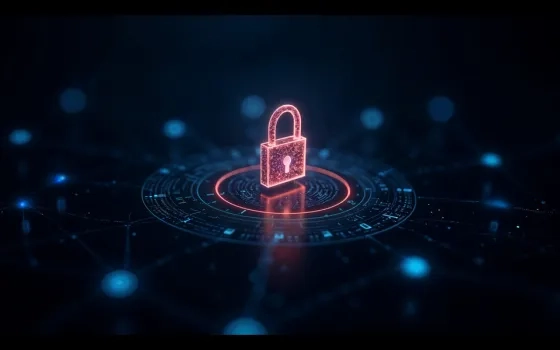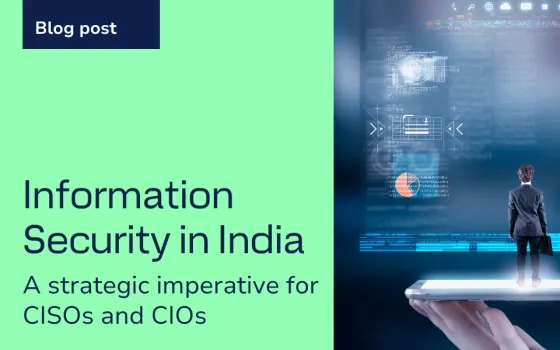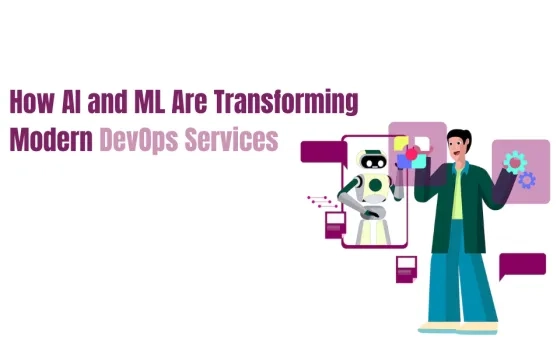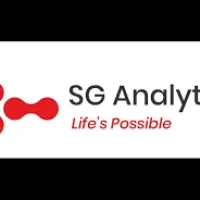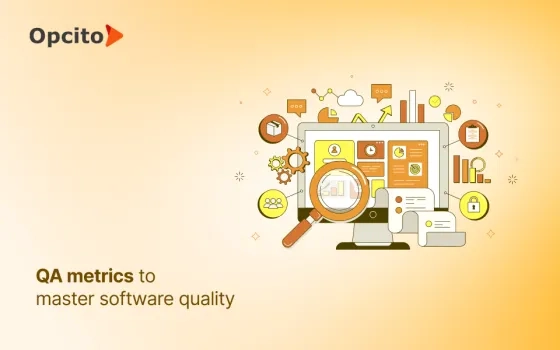In today's digital landscape, regulatory compliance is no longer a mere checkbox but a critical pillar for organizations striving to build trust and ensure data privacy. Compliance is the cornerstone of a robust security framework, safeguarding sensitive data, protecting customer privacy, and mitigating cyber threats. GlobalScape's The True Cost of Compliance with Data Protection Regulations study found that organizations lose an average of $4 million in revenue due to a single non-compliance event.
Organizations stress compliance because it helps them meet legal and industry standards for operating ethically and securely. By minimizing the risks of data breaches, cybersecurity threats, and reputational damage, they demonstrate a commitment to maintaining high standards and building a solid foundation of trust with stakeholders.
What is compliance in DevSecOps, and why is it important?
As software release speeds increase, there is a higher risk of unnoticed threats in new releases. DevOps and Compliance managers are crucial in preventing compliance issues arising from disorderly development workflows. Compliance rules in DevOps include conducting thorough functional and performance testing before releasing software into production and allowing only authorized personnel to deploy software releases.
While some organizations enforce compliance policies at the end of the deployment process, addressing compliance earlier in the development cycle is more cost-effective. They set rules to ensure they adhere to regulatory requirements like GDPR, HIPAA, and SOX, to name a few. To effectively manage it in a rapidly deploying environment, enterprises should shift compliance to an earlier stage in the DevSecOps process, conduct frequent audit trails, implement robust safeguards and guardrails to prevent unauthorized releases and foster close collaboration between DevOps and compliance teams.
Best practices to achieve regulatory compliance with DevSecOps
- Get your people to work together:
DevOps exists so that the development and operations teams break down silos and operate efficiently. DevSecOps takes it further by integrating security and compliance goals seamlessly with development and operations objectives. It is possible to face some form of resistance from the team – because change is not always welcomed easily.
Conducting security reviews or compliance checks as late-stage tasks before deployment can result in significant inefficiencies. This approach may require revisiting crucial design decisions, causing delays in the final delivery. To overcome these challenges, aligning everyone around shared goals from the start is crucial. Development and operations teams can then collaborate closely with security experts to identify efficient ways of meeting security and compliance-specific requirements, integrating them seamlessly into their daily workflow.
- Examine your data-access controls:
An essential aspect of any development process is identity and access management. Identifying every individual who contributes to or can access systems or software is crucial while implementing controls to prevent unauthorized access, shared logins, or user impersonation. Additionally, each user should be assigned an appropriate Role Based Access Control. Once these controls are in place, a system should be in place to provide traceability, enabling seamless collaboration and a clear understanding of who made specific changes, when they were made, and the reasons behind them. Many compliance regulations stress the importance of documenting business processes and incident-handling procedures. A well-developed DevSecOps system allows you to integrate such policies seamlessly into the workflow using automation.
- Make information visual when you can:
Teams must use visual aids to define and review processes whenever possible. When establishing DevSecOps collaboration among team members with diverse skill sets and objectives, a straightforward user interface becomes more than a convenience.
Compliance and security auditors are also human users who rely on accessible and reliable information to enforce controls. By using a user interface that accurately represents controls and audit trails that provide a complete history of events, meeting compliance requirements becomes significantly easier. For instance, such visualizations can display the execution of specific tests, track changes made to records, and indicate systematic access restrictions. By embracing visibility and automation, which already simplify developers' daily work, organizations can ensure both security and adherence to regulations.
- Create secured systems and audit them time-to-time:
When selecting a solution to build upon, it is crucial to prioritize high levels of security and reliability. Take the time to thoroughly research and find a solution that meets the highest privacy, service, and security standards. A reliable DevSecOps solution should comply with industry regulatory standards like GDPR, ISO 27001, EU/US Privacy Shield, HIPAA, the Federal Information Security Management Act (FISMA), and the Sarbanes-Oxley Act.
Additionally, continuous refinement of your compliance and security controls is essential. Choose tool providers which follow best practices and take responsibility for maintaining a well-controlled and secure customer environment.
A robust DevSecOps platform must be resilient in all ways possible. Independent penetration testing can provide reassurance that the platform is secure. Remember that transparency and effective communication are just as crucial as security measures.
Consider whether the platform has a well-defined incident response process and an action plan for handling system alerts and events, particularly security incidents. This process should also include a crisis communication plan that outlines how customers will be promptly notified in the event of a large-scale incident.
- Use automation to track resources and assets:
As the scale of cloud resources expands, it gets unrealistic to keep track of all the assets and resources manually. Some assets and resources may slip through the cracks because of blind spots and human errors. Maintaining compliance in a cloud environment and protecting it depends on a clear understanding of all the resources.
In a cloud environment, due to its sheer size, automation is crucial for the discovery and visibility of the environment. The cloud-native application protection platform (CNAPP) offers multiple perspectives, allowing for confidently meeting the different requirements of scanning, cataloguing, and monitoring cloud environments. When conducting the inventory or resource discovery process, ensure a clear picture of what resources belong to the organization, their location, who can access them, and steps to track new resource deployments or alter existing ones. Also, ensure that essential stakeholders like compliance and DevSecOps teams are aware of the assets. The CNAPP offers multiple perspectives to address various requirements by relying on automation, ultimately boosting compliance confidence.
- Implement observability for all your resources
To effectively monitor the state of your resources, implementing observability is key. Observability provides real-time insights into the state of each resource, allowing you to identify and address any issues that arise promptly.
Manual observation becomes impractical due to the vast scope and scale of modern cloud environments. Therefore, an effective observability solution should possess the following capabilities:
• Data Aggregation: The solution should efficiently gather and consolidate large amounts of data from diverse sources.
• Rapid Data Accessibility: It should provide quick and easy access to the collected data, enabling efficient analysis and troubleshooting.
• Meaningful Analysis: The solution should be able to analyze the collected data and generate valuable statistics and insights.
By incorporating these features, an observability solution can significantly reduce the Mean Time To Repair (MTTR) within your organization, minimizing downtime and enhancing operational efficiency.
Moreover, to ensure compliance with industry standards, organizations should seek an observability solution that offers compliance dashboards specifically tailored to meet the requirements of the Center for Internet Security (CIS) benchmarks. This empowers the observability solution to effectively monitor your assets and keep them compliant with relevant regulations.
- Establish a threat detection and response plan
We need a well-structured threat detection and response plan to safeguard our assets. Acting after an attack is too late; we must establish a proactive approach to detect and mitigate threats before they materialize.
Threat detection is time-sensitive, especially given the dynamic nature of cloud environments, where the threat landscape constantly changes. Traditional methods may lead to dead ends and wasted effort. A powerful CNAPP (Cloud-Native Application Protection Platform) with automated, real-time threat detection is crucial to address this. This solution filters out noise, reduces alert fatigue, and speeds up threat investigation. User-friendly dashboards and alerts empower human monitoring and swift response to events. Compliance issues are no different from threats and require real-time detection and remediation. An ideal CNAPP includes compliance monitoring capabilities, enabling rapid identification of compliance issues within your assets. The system then provides clear remediation steps and detailed insights, simplifying compliance tasks for your DevSecOps team.
By implementing such a comprehensive threat detection and response plan, we can stay a step (or a few steps) ahead of potential threats and ensure the safety of our assets straightforwardly and efficiently.
- Track and monitor configurations
Ensuring the proper configuration of assets is crucial to prevent cloud intrusions, which are often caused by misconfigurations. Cloud environments are dynamic, with constant updates and new security vulnerabilities being discovered. This makes real-time validation and monitoring of configurations and compliance essential. Merely setting up an asset once is not sufficient. We need to track any changes in asset configurations to maintain compliance proactively. This is especially critical as configuration issues can quickly spread across numerous assets, amplifying the risk.
In summary, the focus is on continuously monitoring asset configurations in real-time, the risks associated with misconfigurations, and the benefits of using a high-quality CNAPP to address such challenges proactively.
- Adopt a data governance strategy
Data is crucial in compliance, making a well-defined data governance strategy essential. With cloud applications generating vast amounts of data, traditional approaches won't suffice. To address this, comprehensive data governance is necessary, covering the entire data lifecycle.
Understanding how data is acquired, transmitted, and stored at scale is paramount for effective data governance. This applies to application data and to the metadata generated by security solutions as they observe and monitor your applications. The emphasis is on the need for a clear view of the data lifecycle and an understanding of the data processes, including application data and security-generated metadata.
Get your compliance game strong
Regulatory compliance is no longer an optional add-on but a fundamental necessity for any organization. Building trust, safeguarding sensitive data, and protecting customer privacy is imperative to maintain a solid reputation and comply with growing regulations worldwide. To achieve regulatory compliance with DevSecOps, organizations must embrace best practices that integrate security and compliance seamlessly into their development workflows. Working together across departments, aligning everyone around shared goals, and fostering close collaboration between DevOps and compliance teams are essential steps to success.
Remember, compliance is an ongoing journey, and staying up to date with evolving regulations and best practices is key to maintaining a secure and compliant DevSecOps environment.



